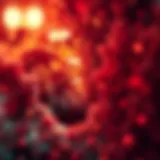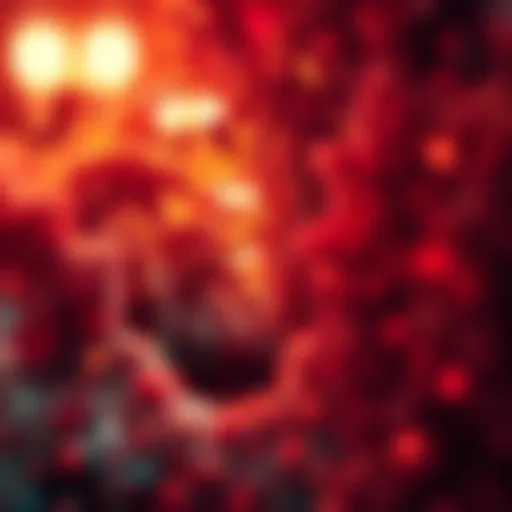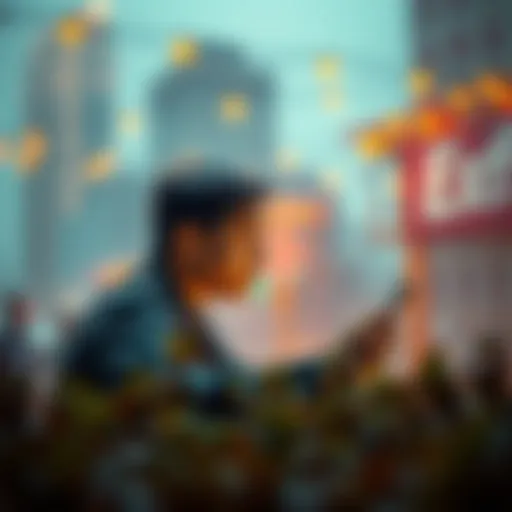Midnight Library Review: Examining Choices and Regrets
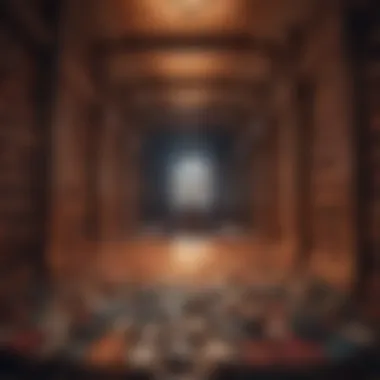

Intro
In the vast realm of literature, few narratives have the capacity to resonate as profoundly as The Midnight Library by Matt Haig. This book entwines the threads of regret, choice, and emotional exploration, presenting a canvas where readers confront their own life decisions through the lens of its protagonist, Nora Seed. The Midnight Library, functioning both literally and metaphorically, invites us into a world where every choice unfolds into a unique narrative path—a tempting exploration of what life could be under different circumstances.
As we embark on this journey, we’ll dissect the key themes that enrich Haig's work, providing a platform for deeper reflection. By examining relevant quotes and insights from the text, we aim to reveal how The Midnight Library not only entertains but also challenges us to take stock of our life decisions. This exploration serves a dual purpose: enhancing our appreciation of the narrative's depth and encouraging introspection about our own choices.
Key Themes Explored
Theme Highlights
The Midnight Library navigates through several compelling themes:
- The Weight of Choices: The novel brilliantly illustrates the butterfly effect of decisions, showing how one small choice can ripple into vast life changes. Every decision, no matter how trivial it seems, carries the potential to alter the course of our lives.
- Regret and Reflection: Regret is a constant companion for many characters, particularly Nora, who must grapple with the 'what ifs' of her existence. The narrative feeds on this premise, forcing readers to confront their own dissatisfactions and dreams unfulfilled.
- The Pursuit of Happiness: Through various iterations of Nora’s life, the book questions what true happiness looks like. Is it in fame, love, or merely existing contentedly? Each choice presents a different understanding of joy, capturing the complex nature of human fulfillment.
- The Concept of Parallel Lives: The library itself serves as a metaphor for the limitless possibilities within our reach. It prompts readers to ponder the lives they might have led and what paths they may still follow.
Relevant Quotes and Insights
Consider these thought-provoking lines from the book:
"Between life and death, there is a library, and within that library, the shelves go on forever. Every book provides a chance to try another life you could have lived."
This quote captures Nora's journey in the library and lays the foundation for the exploration of alternatives to her current life. It reflects on the profound impact of choices, anchored in a concrete visual that resonates deeply with the reader.
Another insightful passage speaks to the essence of regret:
"You don't have to be a good person to make a good choice. But you do have to be brave enough to see and feel your own life."
Such reflections challenge readers to acknowledge their vulnerabilities, thus fostering a sense of liberation in the acceptance of imperfection.
Actionable Takeaways
Practical Tips and Strategies
While diving into the twisty corridors of the Midnight Library, there are several strategies readers can implement:
- Reflect on Choices: Take time to contemplate your own decisions and consider the possible paths not taken.
- Embrace Imperfection: Recognize that no choice is flawless. Accepting flaws in decisions can lead to personal growth and clarity.
- Create a Decision Journal: Document moments of choice and the emotions tied to those decisions. This can provide a clearer understanding of your choices over time.
Suggested Further Reading
- The Alchemist by Paulo Coelho: A philosophical tale that explores destiny and the journeys we take to find our purpose.
- The Perks of Being a Wallflower by Stephen Chbosky: A coming-of-age novel that sheds light on the complexities of choices faced during adolescence.
In summary, The Midnight Library is not merely a story but an introspective tool that encourages us to weigh our life choices and recognize the broader implications of our decisions. This review seeks to unpack these layers, inviting readers to not only delve into Haig's narrative but also to embark on a personal voyage of reflection.
Preface to The Midnight Library
In the world of literature, stories can serve as mirrors, reflecting our own experiences, choices, and regrets. The Midnight Library stands out as a poignant exploration of these concepts. It invites readers to engage with the intricate dance of life's decisions, opening doors to roads taken and those left behind. The significance of this novel lies not only in its compelling narrative but also in its rich thematic layers that resonate with anyone who has ever pondered the consequences of their choices.
The importance of this section in the article is multi-faceted. First, it sets the stage for the ensuing discussions about the novel's themes and character profiles. Understanding who Matt Haig is, and how his background informs the narrative, provides context for the ideas presented in the book. Furthermore, an overview of the plot offers a roadmap for readers who may not be familiar with the storyline or its emotional depth.
As we delve into our analysis, readers can expect to discover how Haig's expert storytelling taps into universal emotions. This exploration not only deepens one's appreciation for The Midnight Library but also prompts introspection about personal experiences and choices. The aim here is to lay a solid foundation that enhances the overall comprehension of the novel's significance in both literary and personal contexts.
Author Background
Matt Haig's life experiences are intricately woven into the tapestry of The Midnight Library. Growing up in England, Haig struggled with mental health issues, and these challenges have profoundly influenced his writing. His willingness to address such personal topics lends authenticity to his narratives. In many of his works, he tackles various themes, from existential questions to the intricacies of human emotion.
Before he became a celebrated author, Haig worked as a journalist and a publisher, giving him a broad view of the literary world. His transition from these roles to writing novels highlights his passion for storytelling. Haig's earlier works, including Reasons to Stay Alive and How to Stop Time, also resonate with profound emotional truths, making his insights about life particularly poignant.
Overview of the Plot
The plot of The Midnight Library hinges on Nora Seed, a woman caught in the throes of despair. Faced with deep regret and a lack of satisfaction with her life, she finds herself at a crossroads. The narrative takes a unique turn when Nora discovers a library that contains books representing different paths her life could have taken. Each book allows her to experience these alternate realities, confronting choices she made—or didn’t make.
This exploration of ‘what if’ offers a fascinating lens through which to view our own lives. Readers follow Nora as she navigates the ups and downs of these parallel existences. Haig deftly balances the weight of existential themes while ensuring that the narrative remains accessible and engaging. Here are some key elements of the plot:
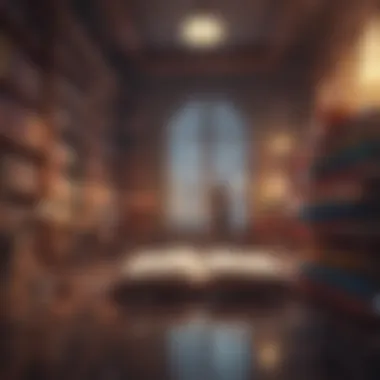

- Nora's existential crisis prompts her entry into the Midnight Library.
- Each book she opens reveals a different life, filled with various successes and failures.
- The journey sparks essential introspection about what constitutes a fulfilling life.
As Nora traverses through her various lives, Haig elevates the narrative from mere fiction to a philosophical exploration of happiness, regret, and human connection, urging readers to reflect on their own existence and choices. This overview sets the stage for deeper dives into the themes explored throughout the novel, enriching our understanding of Haig’s thoughtful commentary on life.
Themes Explored in the Novel
Themes in literature serve as the backbone of storytelling. They delve into the underlying messages that form the framework of the characters’ struggles and triumphs. In The Midnight Library, Matt Haig intricately weaves several potent themes that invite readers to reflect on their own lives and the choices they make. These themes serve not merely as narrative devices, but as profound commentary on the human experience.
Regret and Choices
Regret is a central theme in The Midnight Library. Nora Seed, the protagonist, is enveloped by a sense of disappointment as she navigates through life's choices. Each decision, from the mundane to monumental, brings with it layers of emotions and possible outcomes. The library serves as a metaphorical space where Nora confronts her past choices. In this haven of infinite possibilities, she explores alternate lives, each reflecting her deepest regrets.
"Regret is a heavy burden; one that can either serve as a guide or a gatekeeper to our potential."
This theme resonates intensely with readers, prompting them to ponder their own lives. Have they made choices they wish to change? The book embraces the complexity of human nature, illustrating that our regrets do not define us but rather contribute to a richer understanding of ourselves. By exploring different versions of her life, Nora learns invaluable lessons about acceptance and the significance of the present moment.
The Concept of Parallel Lives
The idea of parallel lives—an essential aspect of the novel—allows Nora to engage with the notion that each decision creates a branching path, leading to vastly different experiences. The library itself symbolizes these endless possibilities. For instance, Nora encounters lives where she became a rock star, a successful author, or even a mother. Each version of her life holds its own joys and challenges, illuminating the myriad ways life can unfold.
This theme opens up discussions around free will and destiny. Are we governed solely by our choices, or are there deeper forces at play? Haig invites readers to consider the beauty and pain intertwined in the complexities of life, encouraging a reflective stance on how choices shape identity. The concept of parallel lives also emphasizes the idea that life is not a linear journey, allowing individuals to appreciate the myriad paths available to them.
Hope and Redemption
Amidst the struggles of regret and the burden of choices, a thread of hope runs throughout the narrative. Nora's exploration in the Midnight Library leads her to moments of clarity and insight about her life. Each alternative life presents opportunities for redemption, highlighting the power of second chances. It suggests that regardless of past missteps, there is always a possibility to begin anew.
Hope manifests not just as a feeling but as an actionable element within the story. By recognizing her own worth and understanding the impact of her choices, Nora evolves into a character of resilience. The underlying message is clear: even in the depths of despair, the potential for change exists.
This theme engages readers by addressing the human spirit's tenacity when faced with overwhelming odds. The journey through the library is symbolic of a journey toward self-discovery and acceptance, ultimately reinforcing the belief in hope as a guiding principle in life.
Each of these themes woven within The Midnight Library serves as a reminder of the intricacies of existence. The interplay of regret, choices, and the shimmer of hope intrigues both students and seasoned readers alike, enriching their understanding of the narrative while inviting personal reflection.
Character Analysis
Understanding character development in The Midnight Library forges a deeper connection with the themes woven throughout the narrative. Characters serve as conduits through which readers can explore complex ideas like regrets, aspirations, and the choices that shape one's life. A thorough analysis of these characters offers insights that are crucial to grasping the emotional weight of Nora Seed's journey, as well as the contrasting lives and perspectives that populate the library. This section will break down Nora as the protagonist and explore the roles played by various supporting characters, each adding layers to the exploration of the book's central motifs.
The Protagonist: Nora Seed
At the heart of The Midnight Library is Nora Seed. She’s a character that many can relate to; her struggles resonate with those who have felt adrift in life. Nora’s journey pivots around her deep sense of regret and longing for different outcomes.
Nora’s initial despair sets the stage for her to navigate the library, filled with endless possibilities of what her life could have been. She embodies transformational potential, as each choice she grapples with provides a unique lens into the human experience. What stands out about Nora is her inherent self-awareness. This characteristic allows readers to grasp her development throughout the narrative. The moment she begins to confront her choices offers an intriguing look into the human psyche's resilience. Nora's evolution encourages readers to reflect on their own life decisions, creating a bridge between fiction and reality in poignant ways.
Supporting Characters
The impact of supporting characters in The Midnight Library cannot be understated. They enhance the main narrative, lending support and providing contrasting viewpoints. Each supporting character opens up discussions around choice and consequence, enriching Nora’s exploration of her life’s possible avenues.
The Librarian
The Librarian, a pivotal character, serves not only as Nora's guide but also as a mirror reflecting different aspects of life and choice. Their presence signifies a steady wisdom that nurtures Nora’s awakening. What makes The Librarian particularly fascinating is their neutral stance. They do not push Nora towards decisions or impose their views, allowing her the space to navigate her own path.
A unique feature is the Librarian's extensive knowledge of all the different lives available to Nora, which emphasizes the theme of infinite possibilities. While the role is inherently supportive, it also carries the burden of observing the struggles of others, raising questions about their own existence. This duality can create an enriching dialogue around the nature of guidance and free will.
Family Members
Family affects Nora in profound ways. Their perceptions and expectations play large roles in shaping her self-image and identity. Family members, such as her brother, embody different lessons and repercussions of choices—some based on love and others marred by disappointments. This complexity is valuable for the analysis, showcasing how familial relationships can weigh heavily on personal decisions.
A crucial characteristic of the family members is their realistic portrayal; they aren’t merely supportive figures. They prove to be sources of both encouragement and conflict. Their nuanced presence adds depth to Nora’s consideration of her options and ultimately aids her understanding of acceptance.
Friends and their Influence
Friends in Nora's life represent various influences and the dichotomy of connection versus isolation. Each friend has traits that significantly affect Nora’s journey, showcasing the lasting impact relationships can have. One notable aspect is their ability to inspire change while also amplifying feelings of insecurity and doubt.


In exploring friendships, the novel raises essential questions about belonging and the impact of peer perspectives on personal aspirations. These relationships have a unique duality: they can uplift or hinder. The portrayal of friends illustrates the differing paths one's friendships may pave, making it an intriguing topic for discussion in this context.
"Choices are like branches in a tree; you never know how far they’ll ripple out until you’ve walked a few miles down a specific path."
In summary, character analysis in The Midnight Library reveals profound insights into the themes of choice and regret. Nora, alongside her supporting characters, brings a rich tapestry of emotion and thought, enabling a multifaceted examination of human existence. Each character’s journey exists not just in isolation but interlocks with the many navigational paths taken in this library of life.
Narrative Structure
In "The Midnight Library," Matt Haig employs a unique narrative structure that is pivotal to experiencing the story's core themes. This novel is not just a straightforward linear tale; rather, it presents a blend of reality and the imaginary, allowing readers to navigate beautifully through multiple lifetimes and choices. The multidimensional narrative opens the door to a more profound engagement with the philosophical questions of existence, regrets, and hopes.
A significant aspect of the narrative structure is its non-linear storytelling, which distorts the conventional time flow. By jumping between different versions of Nora Seed's life, Haig enables readers to witness the consequences of choices in a manner that feels almost cinematic. Choice becomes tangible, making readers question what paths they might have taken in their own lives. This reflective engagement fosters a greater connection to Nora's struggles, evoking empathy and introspection.
Non-Linear Storytelling
Non-linear storytelling in "The Midnight Library" creates a maze of experiences laden with existential weight. Each time Nora enters the library, she is met with various lives—each a result of a different choice made. This literary technique allows for a creative exploration of what if? scenarios that create a rich tapestry of emotions.
Instead of adhering to a single timeline, the plot leaps through moments, showcasing how intertwined our decisions are. At times, this makes the reader feel a sense of vertigo, much like Nora's experiences. It mirrors real life, where one choice can lead to an avalanche of unforeseen consequences. This dynamic approach compels the audience to actively participate, piecing together different aspects of Nora’s life and character.
"A life well lived is not about avoiding mistakes, but about embracing choices regardless of their outcomes."
Imagery and Symbolism
Imagery in "The Midnight Library" is meticulously crafted to reflect Nora's internal landscape. The library itself serves as a powerful symbol—a metaphorical space of possibilities. Each book represents a life not lived, and every shelf signifies the choices that shape our existence. This vivid creation paints a picture that resonates deeply with readers; the library becomes a sanctuary where the weight of past decisions is confronted.
Haig cleverly uses various forms of imagery to illuminate the themes of regret and hope. The contrasts between the dull, sometimes oppressive atmosphere of Nora's original life and the vibrant, diverse alternatives she explores in the library manifests readers' struggles with personal trials.
Symbols such as the stars, representing potential and dreams, accentuate the essence of what might be. When Nora interacts with these symbols, it underscores that every choice leads down a different path that can be both enlightening and burdensome.
Overall, the narrative structure—rooted in non-linear storytelling, enriched with potent imagery and symbolism—serves as a means for readers to sift through layers of meaning. Each turn in the plot deepens the understanding of the characters and their choices, appreciating the beautifully entwined nature of life.
Philosophical Insights
Philosophical insights form the backbone of Matt Haig's The Midnight Library, weaving complex ideas throughout the narrative and enriching the reader's experience. This section unfolds the relevance of philosophy in understanding the intricate themes posed in the novel. It invites readers to reflect on deep existential questions, and personal regrets, and encourages a thoughtful evaluation of life choices.
Existential Questions
The Midnight Library nudges the reader to glimpse the vast landscape of existential questions. What is the meaning of life? Are our choices truly our own? Nora Seed, the protagonist, finds herself confronting these queries as she explores various lives she could have led from the comfort of the library. Each book represents an alternative path and the potential futures that sprouted from different decisions. This narrative device echoes the age-old inquiry into the nature of existence. Readers might find a part of themselves in Nora's exploration, contemplating their life choices.
In light of this, we can draw parallels with existential philosophy, which posits that individuals are responsible for creating meaning in their lives. The notion that every decision carries weight becomes an undercurrent in Haig's prose.
"No matter what choices we make, we are bound to live with the repercussions of our decisions. Each choice shapes our identity in ways we might only understand later on."
Influence of Stoicism
Stoicism presents a powerful philosophical framework that resonates strongly throughout the book. The Stoic belief encourages acceptance of that which we cannot change. In Nora's case, she learns to deal with regrets instead of succumbing to despair. This perspective becomes vital for her journey.
Instead of lamenting what might have been, embracing Stoicism leads her toward resilience. In many instances, characters in the library impart pieces of Stoic wisdom, reminding Nora that she can't control every aspect of life – rather, she can control her reactions to them. Such lessons about self-control and emotional resilience fit seamlessly into the narrative's fabric, offering a practical framework for readers to reflect on their own lives.
In summary, the philosophical insights threaded throughout The Midnight Library elevate the story beyond mere fiction. They pose significant questions about existence and influences, encouraging readers to engage in a broader dialogue about life's complexities. The weight of choices and the acceptance inherent in Stoic philosophy compel us to consider our paths, ultimately enriching our understanding of what it means to live.
Critical Reception
The reception to The Midnight Library speaks volumes about the book's impact, transcending mere opinions to become a significant marker in contemporary literature. This section aims to reveal how critics and audiences alike have grappled with its themes and narrative. The discussions surrounding the novel are not just about personal preferences but also engage with deeper questions of existence, regret, and the multitude of lives one might lead. Understanding critical reception can illuminate the broader discourse about life's choices and the emotional weight they carry.
Overview of Reviews
The reviews of The Midnight Library have varied across the spectrum, with some praising its innovative approach to storytelling while others critique its closure on certain philosophical questions. Many reviewers have highlighted the book's ability to resonate on a personal level, allowing readers to introspectively analyze their own choices. For example, a New York Times review remarked that "Haig’s narrative acts as a mirror, reflecting our decisions back at us, often uncomfortably."
Moreover, the novel’s relatability to life’s myriad paths has been a common thread in critiques. Readers express appreciation for Nora Seed's journey, as it embodies a universal struggle with identity and purpose. This relatability shines through in reader reviews on platforms like Goodreads, where commentary ranges from glowing admiration to honest, albeit constructive criticism. The emotional responses elicited by the book forge a connection that many have deemed both refreshing and thought-provoking.
Awards and Accolades
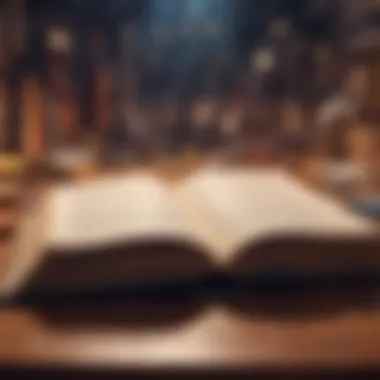

Recognized for its literary merit, The Midnight Library has garnered several prestigious awards, cementing its status in modern literature. The novel’s accolades include:
- Goodreads Choice Awards: Winner for Fiction, an acknowledgment voted on by readers, emphasizing the broad appeal of Haig’s work.
- British Book Awards: Nominated for the popular fiction category, showcasing its prominence in the UK literary scene.
In addition to formal awards, the book has been featured on various best of lists—evidence that its themes resonate beyond just individual readership. These recognitions not only affirm the craft of storytelling but also signify a collective acknowledgment of the novel’s exploration of existential themes, urging readers to confront their emotions and experiences. The layers of narrative structure and character development are evident in both the honors it has received and the conversations it has spurred.
"In each review, one emerges from the library holding a piece of their own life, as Haig encourages exploration beyond the pages of fiction."
The critical reception of The Midnight Library highlights its ongoing cultural relevance and the profound way it mirrors the complexities of life choices, thereby fostering further discussion among both scholars and casual readers.
Comparative Analysis
The examination of comparative analysis within the context of The Midnight Library highlights not only its unique narrative styles but also its thematic resonance with similar works in literature. This section unveils the merits of comparing this novel to other literary pieces, allowing readers to appreciate its distinct voice while grasping the common threads that intertwine various narratives. One of the key elements of comparative analysis lies in the ability to draw parallels between characters, motifs, or themes which enrich one’s understanding of the material, as it opens up dialogues about human experiences and collective emotional truths.
For students and professionals, engaging with comparative analysis fosters refined critical thinking skills. It compels them to delve deeper into character motivations and thematic implications, pushing them beyond surface-level interpretations. This not only enhances reader comprehension but also ignites discussions that can lead to new perspectives and insights regarding both The Midnight Library and its literary counterparts.
Similar Works in Literature
When considering works that echo the thematic essence of The Midnight Library, a few notable titles come to light. These stories often share a proclivity for exploring existential dilemmas, the weight of choices, and the parallel realities that haunt characters’ lives:
- Jane Eyre by Charlotte Brontë: This classic tale presents Jane's journey of self-discovery and the choices that shape her destiny. The emphasis on moral deliberation adds a layer of depth reminiscent of Nora Seed's plight in Haig's narrative.
- The Alchemist by Paulo Coelho: Like The Midnight Library, this novel offers readers a journey filled with choices and the pursuit of one’s personal legend. Themes of destiny and the interconnectedness of life courses are echoed throughout both narratives, inviting reflection on personal journeys.
- Sliding Doors (film): Though not a traditional literary work, this film encapsulates the concept of parallel lives much like Haig’s novel. The idea that simple split-second decisions can lead to drastically different outcomes resonates deeply within the narrative framework.
Comparing The Midnight Library to these works not only underscores its thematic concerns but also places it firmly within a rich tradition of literature that grapples with the tension between choice and consequence.
Influence on Contemporary Fiction
The impact of The Midnight Library on contemporary fiction cannot be overstated. Its bold exploration of choices, regrets, and the human condition provides fertile ground for writers looking to address similar existential themes. In a world increasingly drawn toward introspection and emotional authenticity, many authors draw inspiration from Haig’s approach to complex topics.
- Emerging Themes: The narrative’s focus on mental health and philosophical inquiries represents a shift towards more candid discussions in the literary realm. It resonates well with modern readers, who seek relatable and meaningful content rather than mere escapism.
- Intertwining Genres: Aspects of magical realism interwoven with genuine emotional crises are becoming more prevalent. Authors are blending genres to explore the ‘what if’ scenarios that often emerged from existential questions, reflecting a growing trend in how stories are constructed.
- Broader Conversations: Moreover, The Midnight Library contributes to broader conversations in contemporary literature regarding individual choices and their ripple effects in the fabric of society, evident in various young adult and adult fiction that grapples with similar narratives.
The influence of The Midnight Library on contemporary fiction not only shapes the works of new authors but also encourages readers to engage more meaningfully with their own life choices. This dynamic interplay enriches the literary landscape by continuously inviting fresh perspectives, keeping the dialogue around regret, hope, and redemption alive.
"In every choice, there is a universe of possibilities, each one equally valid in its potential to alter the course of a life."
By recognizing both the similarities in other literature and the profound impact of Haig’s work, readers can deepen their understanding of the complexities that define human existence and the narratives built upon them.
Impact on Readers
The exploration of how "The Midnight Library" reverberates with readers is not merely an exercise in literary criticism; it’s an invitation to delve into one’s own psyche. Matt Haig has skillfully woven a narrative that resonates deeply, artfully tapping into our innate curiosities and fears surrounding choices and missed opportunities. Each reader's encounter with the book offers a unique lens through which they can scrutinize their lives, making this theme of impact incredibly significant.
Emotional Reactions
The emotional reactions provoked by this novel are varied and potent. Readers often report feelings of empathy and sorrow as they follow Nora Seed’s poignant journey, resonating with her regrets and aspirations. The emotional weight of the choices she faces can stir deep-seated memories of our own pivotal moments. This is where the author’s mastery shines—through the relatability of Nora's plight. Readers might find themselves reflecting on their own decisions, questioning paths not taken or dreams put on hold.
Such emotions can elicit catharsis, a feeling of release from pent-up emotions. The exploration of the alternate realities illustrates how small choices can ripple into larger consequences, amplifying the impact of regret on our psyche.
"The beauty of the story lies in how it encourages readers to confront their inner turmoil and embrace their imperfections."
One crucial aspect lies in the book's accessibility; its language and imagery make profound themes approachable. This distillation of complex emotions into relatable scenarios allows individuals from diverse backgrounds to engage, reflect, and react. It is not unusual to close the book feeling a little uplifted, as though the narrative whispers that hope is always a shade away.
Personal Reflections
Personal reflections during and after engaging with The Midnight Library often mirror the introspections the protagonist faces. Each interaction Nora has within the library ignites a spark of contemplation among readers.
Many individuals express a newfound clarity about their own life choices—pondering on what might have been or how they might forge ahead differently. It invites readers not just to dwell on what they lack but to consider what they possess.
Many responses also point to an increased drive to pursue change. Whether it's rekindling relationships, pursuing forgotten passions, or simply appreciating the present, the novel has a way of fostering a spirit of resilience amongst its readers.
Perhaps the most profound takeaway is a sense of ownership over one's narrative—a realization that regardless of the paths one could have taken, the journey they are on is uniquely their own. This encapsulation of personal reflection serves to enrich the reading experience, transforming it into a catalyst for growth and understanding.
Closure
The conclusion acts as the final piece of the puzzle in understanding 'The Midnight Library.' It distills the essence of the story and its multi-layered themes into digestible insights. Here, we consider how everything ties together, reflecting on the larger impact of the book on readers' emotions and thoughts. The narrative does not simply entertain; it pulls back the curtain on the human experience, prompting us to confront our own choices and the regrets that often shadow them.
Summary of Key Insights
In our exploration, several key insights emerge that resonate strongly throughout the text:
- The Complexity of Choices: Choices in life are seldom black and white. Throughout the story, Nora Seed's journey through various lives highlights how every decision leads to different consequences. The novel shows the ripple effect of choices, forcing us to reconsider our own.
- Emotional Resonance: The protagonist's struggles are painted with a depth that connects on an emotional level. Readers find themselves in Nora's shoes, experiencing her grief, hope, and ultimately her understanding of life as a tapestry woven from myriad threads of choices.
- Philosophical Depth: By addressing existential questions regarding life's meaning, the book encourages reflection not just about our choices but also about the very nature of existence and fulfillment. It brings to light the Stoic principles, which emphasize accepting what cannot be changed, a lesson that feels particularly relevant today.
- The Role of Relationships: Another pivotal insight is the importance of the people in our lives. The supporting characters, like the librarian and Nora's family, illustrate how connections shape our experiences and inform our choices.
Final Thoughts on the Novel's Significance
In wrapping up our review, it is vital to recognize the profound impact 'The Midnight Library' has had on many readers. It transcends mere fiction, serving as a reflective surface for those grappling with their own regrets and life decisions. The book resonates on multiple levels, providing an escape into a realm of possibilities while subtly nudging the audience to reassess what truly matters in their own lives.
The beauty of the narrative lies in its ability to inspire conversations about life choices, regrets, and, ultimately, the paths we take. It invites readers not just to observe Nora's journey but to engage with their own narratives, encouraging a universal connection through shared human experience.
"Between life and death, there is a library And within that library, the shelves go on forever. Every book provides a chance to try another life you could have lived. To see how things could be different."










